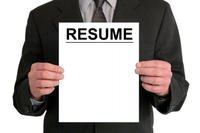Are you wondering which career direction is right for you? Whether you're a college student preparing for graduation or an established professional unsure about a midlife change, deciding upon a career can be difficult. To select one, you must know something about yourself, the world of work and how to find occupations that are suitable for you -- this is no easy task.
Your decision may have lifelong ramifications; for example, your choice of career can play a major role in determining your income, status within your community, opportunities for success, circle of friends and even your choice of a spouse. The career you choose helps shape your identity and sense of self-worth.
One of the great benefits of life in America is the freedom to choose your line of work. To respond to this opportunity as well as the challenge it presents, many career guidance professionals have developed systems or programs for helping you select a career path.
After 30 years of counseling people in career planning, this is what I've come up with:
- Begin with a Thorough Self-Assessment.
Through the use of personal-awareness techniques, peer-assessment surveys, professional testing or counseling, your first objective should be to identify your interests, skills, values, needs and behavioral traits. Check out our Career Fit Indicator to help you determine the best fit for your personality, values and work style.
- Time for Research.
Using what you've learned about your interests, review various sources of occupational information to identify occupations you feel best match your interests. Many career "crosswalk" systems have been developed that identify occupations related to interest patterns. You will more than likely find several occupations that match your interests. Use these jobs to form your list of career possibilities.
- Learn More.
Now research job titles on your list to learn more about each option. Gather such information as duties, entrance qualifications, training options, salary and benefits, advancement opportunities, and positive and negative working conditions. This information can be obtained through printed literature or actual conversations with workers. Or check out Monster's job profile database.
- Make a Tentative Career Decision.
Based upon what you know about your interests and matching occupations, select an occupation to pursue. Don't worry about making a bad or final decision at this point. Just make the best decision you can.
- Test Out Your Decision.
It's often impossible to determine if an occupation is right for you without trying it out, and there are several ways to do this. You could take a related course, work as a volunteer, shadow a professional worker for a day, interview several people working at the job or take a part-time job within your chosen field. Do something to get a feel for the real job. Test all your career options before moving onto the next step.
- Make a Final Career Decision.
Based upon what you know about your personality and the world of work, select an occupation you feel is the best match for you. If you experience difficulty with this step, consult a professional career counselor for assistance.
- You're Almost Done.
Finally, if appropriate, complete any necessary training to develop the recommended qualifications. Upon completion of this step, you should be ready to seek a position in your chosen field.
Naturally, no short article, including this one, can truly take you through a complete career-planning program like the one illustrated above. But hopefully you'll be inspired to start the process. Whatever career you elect to pursue, make sure you first give it careful consideration. Your future will thank you.
This article originally appeared on Monster Career Advice.























